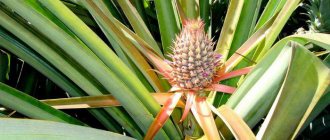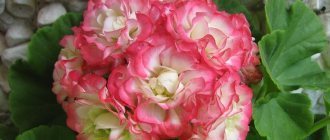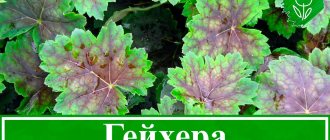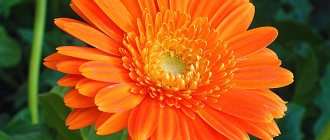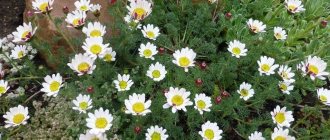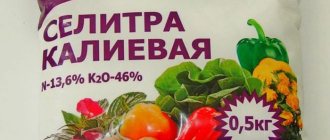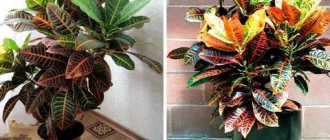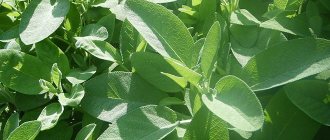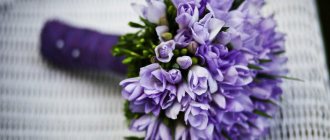Breathing is a chain of chemical reactions that allows all living beings to synthesize the energy necessary to maintain life. What do plants breathe and how do plants breathe? Read about it below.
This is a biochemical process in which air moves between the external environment and the tissues and cells of the species. When breathing, oxygen is inhaled and carbon dioxide is exhaled. Since the entity obtains energy by oxidizing nutrients and therefore releasing waste products, it is called a metabolic process.
Let's take a look at plant respiration to learn about the process of respiration and the different types of respiration that occur in plants.
Do plants breathe?
Yes, like animals and people, plants also breathe.
Plants actually need oxygen to breathe, and in response, they release carbon dioxide. Unlike humans and animals, plants do not have any specialized structures for gas exchange, but they do have stomata (found in leaves) and lentils (found in stems) that actively participate in gas exchange. The leaves, stems and roots of plants breathe more slowly than humans and animals.
Breathing is different from breathing. Both animals and people breathe, which is one of the stages of respiration. Plants engage in respiration throughout their lives as the plant cell needs energy to survive, but plants respire differently through a process known as cellular respiration.
Through the process of cellular respiration, plants produce glucose molecules through photosynthesis by capturing energy from sunlight and converting it into glucose. Several live experiments demonstrate plant respiration. All plants respire to provide energy to their cells to keep them active or alive.
Plant respiration
Let's look at the respiratory process in plants.
Photosynthesis process
Photosynthesis and respiration are related, although they are opposite processes. Their course is sequential. Photosynthesis is one of the ways a plant feeds. Under the sun's rays, trees and shrubs form substances from the energy they received due to lighting.
And breathing is the method of releasing it. The energy released is contained in the nutrients that the plant stores. But there are differences between the processes of respiration and photosynthesis.
In the first case, a tree, flower or moss releases carbon dioxide. It is through respiration that a plant absorbs oxygen, just like other living things. Gas exchange takes place through stomata and lentils. And germinating seeds have such a thin skin that substances can escape into the atmosphere through its openings.
Breathing takes place in every cell of the body, as energy is formed and stored in them. To put it briefly and clearly, during this process the plant receives useful substances from the environment. During breathing, it absorbs energy from them and uses it for development and growth. And the excess is released back into the atmosphere.
During photosynthesis, plant organisms absorb gas and release oxygen. This is why trees and flowers are so valued, because they make the atmosphere suitable for the life of other creatures - humans and animals. Gas exchange occurs only through the stomata. And the process itself takes place only in green cells. They contain a special substance - chlorophyll.
Photosynthesis plays a special role in plant life. During this process, sunlight is absorbed so that the body's cells can be nourished. Light is stored by the plant to be spent on its development and growth.
Breathing in different parts of the tree is not the same in intensity. But there are certain elements where the process proceeds quickly:
- growing organs;
- germinating seeds;
- blooming flowers.
Biologists do not recommend placing such plants in residential areas - they emit a lot of gas. It makes the air unfit for humans. You should not place cut flowers in rooms, as they absorb too much oxygen.
Not only above-ground organs can breathe. The root cells are also saturated with air. For their normal development, you need to frequently loosen the soil around the plant.
Breathing in the roots
Roots, the underground part of plants, absorb air from the air gaps/spaces between soil particles. Consequently, the oxygen absorbed by the roots is used to release energy, which will be used in the future to transport salts and minerals from the soil.
We know that plants have the special ability to synthesize their own food through photosynthesis. Photosynthesis occurs only in those parts of plants that have chlorophyll—the green parts of plants. Photosynthesis is so obvious that it sometimes seems to mask the respiratory process in plants. Respiration should not be mistaken for photosynthesis. Respiration occurs throughout the day, but the process of photosynthesis occurs during the day, only in the presence of sunlight. Consequently, plant respiration becomes evident at night.
This is the reason why we often hear people warn against sleeping under a tree at night, as it can lead to suffocation due to the excess carbon dioxide released by trees after breathing.
Influence of natural conditions
Plants that can be found in the mountains or constantly illuminated areas are more active. Shade-loving organisms do not breathe as often or quickly. Other natural conditions also influence the intensity of the process:
- water;
- air temperature;
- oxygen content in the atmosphere.
If seeds are planted in dry soil, their breathing will be slow. For normal development and consumption of nutrients, soil moisture must be at least 33%. But for long-term storage of grain and dry plants, its level must be reduced to 14%.
The intensity of breathing directly depends on the air temperature. The higher it is, the faster the process proceeds. It doesn’t stop even in winter at -20 C, it just slows down. Thanks to this, owners of summer cottages manage to keep potato tubers in their cellars and basements intact. But too high a temperature also negatively affects the condition of the plant. Seeds stop breathing if the heat reaches +50 C.
The degree of illumination is of great importance. The brighter the room, the faster the seeds will germinate. If the seedlings have grown too much, they need to be placed in the shade. Flowers and trees that are found in cool, low-light areas breathe much more slowly.
Oxygen is necessary for all living organisms on the planet, except bacteria. But in the air it is contained in a certain ratio with other gases. The composition of the atmosphere changes when industrial waste enters it. In some areas the air becomes unsuitable for living animals and humans.
Pollution causes holes in the ozone layer, causing the greenhouse effect. The consequences of such changes are the melting of glaciers and the flooding of some land areas, as well as a shift in the seasons of the year.
Breathing in the stems
Air in the case of a stem diffuses into the stomata and passes through different parts of the cell to breathe. At this stage, the released carbon dioxide also diffuses through the stomata. It is known that lenticels carry out gas exchange in woody or higher plants.
Root nutrition
Plants absorb many elements required for existence from the soil. Nitrogen and zonal elements are supplied by cations and anions. Only leguminous plants have the ability to assimilate atmospheric nitrogen on a molecular basis. There are a number of elements that are absorbed by plant living organisms:
- nitrogen;
- phosphorus;
- sulfur;
- calcium;
- potassium;
- sodium;
- magnesium;
- iron.
Plants are able to act on the soil in solid form, transforming the required substances into the required state.
Breathing in the leaves
Leaves are made up of tiny pores known as stomata. Gas exchange occurs by diffusion through stomata. Sentinel cells regulate each of the stomata. The exchange of gases occurs when the stomata close and open between the lower leaf and the atmosphere.
Stomata
Soil protection
People have a destructive influence on nature, destroy forests, build reservoirs, and reduce soil fertility through improper irrigation. As a result, plants cannot exist because salts in large quantities interfere with their development.
Due to salinization and other phenomena of the earth, areas that could bear fruit are reduced. But deserts are increasing their area. Over the past 20 years, they have increased by 100 million hectares. If this continues, then over time the lands on the planet will not be able to be used for agriculture.
In order to preserve the soil, it is necessary to take measures to prevent salinization. It is necessary to cultivate the land without harming it, fertilize it correctly, and do not use pesticides. For pest control, there are analogues that do not harm the biological environment.
To protect the top layer of soil from the wind, it is necessary to make shelterbelts. They will allow moisture to remain in the fields.
Differences between plant respiration and photosynthesis
The difference between plant respiration is shown in the table.
| Photosynthesis | Breath |
| This process is characteristic of all green plants containing chlorophyll pigments. | This process is common to all living things, including plants, animals, birds, etc. |
| Food is synthesized. | Food oxidizes. |
| Energy is conserved. | Energy is released. |
| This is an anabolic process. | This is a catabolic process. |
| Requires cytochrome. | Cytochrome is also needed here |
| This is an endothermic process. | This is an exothermic process. |
| It contains products such as water, oxygen and sugar. | It contains products such as carbon dioxide and hydrogen. |
| Occurs during the day only in the presence of sunlight. | This is a continuous process that occurs throughout life. |
Movement and transformation of salts
After the roots have received nutrient salts, they move and transform into necessary substances. This releases energy. This creates the necessary conditions for the roots to breathe. If the soil aeration is good, then there is a proper supply of oxygen. The life activity of the plant is also affected by the corresponding temperature and the presence of poisons in the soil.
All mineral and organic substances that have formed move to the leaves.
Thus, the supply of substance ions to the plant occurs in 3 stages:
- change of ions from solid form, movement to the surface of the roots;
- penetration into roots;
- their movement into plant organs that are located above the ground.
Types of breathing
There are two main types of breathing.
Aerobic respiration
This type of respiration occurs in the mitochondria of all eukaryotic organisms. F molecules are completely oxidized into carbon dioxide, water, and energy is released in the presence of oxygen. This type of respiration is observed in all higher organisms and requires atmospheric oxygen.
Anaerobic respiration
This type of respiration occurs in the cytoplasm of prokaryotic structures such as yeast and bacteria. Here, less energy is released as a result of incomplete oxidation of food in the absence of oxygen. Ethyl alcohol and carbon dioxide are produced during anaerobic respiration.
Reasons for the development of light breathing
The beginning, as scientists suggest, was the symbiosis of photosynthetic primitive organisms with non-photosynthetic ones.
Symbiosis is understood as mutual participation in processes, which is beneficial to both parties. Small photosynthetics living in water absorbed carbon dioxide from the environment, releasing oxygen. If there were no breathing, O2-absorbing organisms in the environment, unbearable conditions would have been created for photosynthetics. But in the process of evolution, those representatives of the organic world also survived that were somehow useful for non-photosynthetics. One of the compounds that is formed during photosynthesis is glycolic acid. This substance is also released by some modern algae. As a result, non-photosynthetics received glycolic acid from photosynthetics. This, in turn, contributed to increased oxygen consumption for oxidation of the compound.
How do plants breathe?
All green plants respire through cellular respiration. In this process, nutrients obtained from the soil are converted into energy and used for various cellular activities.
Do plants breathe at night?
Yes, plants breathe throughout their lives, both day and night. The chemical equation for cellular respiration is expressed as oxygen + glucose -> carbon dioxide + water + thermal energy.
Name the respiratory organ in woody stems?
In hard and woody stems, respiration or gas exchange occurs through the lentils. These are small pores scattered throughout the bark and are found on all trees.
Lentils
What is the role of stomata in plant respiration?
Stomata are tiny pores located on the epidermis of leaves, stems and other organs. During cellular respiration, stomata facilitate gas exchange by opening and closing pores.
Stomatal structure
Experiments
You can see in practice how plants breathe. The 6th grade biology curriculum covers this issue in great detail. To observe the process, you can take a leaf from an indoor flower. In addition, you will need a magnifying glass, a transparent container filled with water, and a cocktail straw. Experience proving that plants respire allows not only to understand the process, but also to identify the sample’s need for oxygen. Small holes can be seen on the cut of the sheet. Part of the sample is immersed in water, and bubbles are released. There is another way to see how plants breathe. To do this, take a bottle, pour water into it, leaving about two to three centimeters empty. A leaf on a long stem is inserted so that its tip is immersed in the liquid. The opening of the bottle is tightly covered with plasticine (instead of cork). A hole is made in it for a straw, which is inserted so that it does not touch the water. Use a straw to suck out the air from the bottle. Bubbles will begin to appear from the stem immersed in water.
Do plants secrete phytoncides that kill viruses and bacteria in the air?
Phytoncides are a fashionable topic that has been regularly raised lately, especially in light of the coronavirus pandemic. The idea has become firmly established in the public consciousness that certain volatile substances produced by plants can almost sterilize the surrounding air. Is this really true, and most importantly, does this apply to indoor plants? Let's see what science says.
Even if you open an article on the properties of phytoncides on Wikipedia, you will find that none of the sections contain links to reliable sources of information, and the available bibliography leads either to very old publications by Soviet specialists or to dictionary definitions of phytoncides. There is not a single reference to modern research there. And for good reason: a search in databases of recent scientific publications reveals a number of very weak studies on phytoncides, with low reliability of the results obtained. Moreover, indoor plants do not appear in any of them. There are studies on the antibacterial and antiviral properties of the juice of some plants, but this is not news: humanity has known that plants can be medicinal since ancient times. And we are not talking specifically about phytoncides, but about other components of plant juice.
Plants in general are indeed capable of developing all sorts of methods of protection against pests and infections: these are various poisons - phytotoxins (nicotine, atropine, ricin, etc.), and specific phytohormones that provide an active immune response to the invasion of the “enemy” (you can read more about plant immunity read here >>>). Phytoncides are considered components of the passive immunity of plants, but, as practice shows, they are not particularly effective: the same onions and garlic, “advertised” as a source of phytoncides, are very often affected by diseases - every summer resident sees this on his property.
No one doubts the very existence of phytoncides, but the following questions remain open:
- how much indoor plants are capable of releasing them and
— how effective these phytoncides can be against infections that are dangerous for us, and not for plants. After all, people and tomatoes suffer from very different diseases, and their pathogens are also different. And the plants developed protective mechanisms not for us, but for themselves.
So far there is not a single serious study that would give encouraging answers to these questions.
Based on general knowledge of biology, it can be assumed that indoor plants, if they produce phytoncides, do so in vanishingly small quantities, which are also easily removed from the room during ventilation (we have already agreed on the benefits of ventilation). So the phytoncides from our green pets are unlikely to significantly contribute to the preservation of our health.
But on the Internet you can find many articles without indicating the sources of information, which literally list which human infections certain plants valiantly resist. What is typical is that some of the infections mentioned are transmitted only by contact, and not “through the air,” so no phytoncides would help here.
Absolutely accurate: a passion for indoor plants has a beneficial effect on your mood
Spectrum of radiation absorbed by plants
What spectrum of radiation do plants absorb? Thanks to plant organisms, photosynthesis occurs and the energy necessary for their existence is released. This uses solar lighting. It is absorbed by chlorophyll in the red and blue parts of the spectrum.
In addition to photosynthesis, other processes occur in the plant. They are affected by light from different parts of the spectrum. The fast and slow development of the plant depends on the alternation of dark or light time of day. The red parts of the spectrum influence the development of roots, flowering, appearance and ripening of fruits. Therefore, sodium lamps are placed in greenhouses, which emit the red zone of the spectrum. But the blue area affects the growth of leaves and the plant itself. If this area is not enough, the seedling will stretch upward in search of the necessary light.
Therefore, a person who grows plants should install lamps that emit red and blue colors. Various manufacturers produce such lighting devices specifically for gardening.
So, for development, growth, and fruitfulness, the plant needs nutrition. It does this with the help of soil and air. Due to the lack of some element or unsuitable conditions, the development of the plant will slow down.
Aloe
Typically, in every apartment there are three harmful substances that are emitted by carpets, synthetic materials, paints, and household chemicals. These are formaldehyde, benzene and trichlorethylene. To be on the safe side, for every 10 sq. m area you need to place one indoor plant in a pot. Of course, you shouldn’t place single plants around the perimeter. Compositionally, it is better to arrange them in groups - it will be more beautiful and the air will be cleaner.
Aloe is a plant that grows in almost every home. It has many healing properties, so it is rightly called a home doctor. It has another telling name - agave. Aloe blooms with red flowers, but in indoor conditions this happens extremely rarely. That's why they say that it blooms once every hundred years.
The plant is absolutely unpretentious. It tolerates dry seasons and lack of light well. Aloe juice has bactericidal properties. It is used as nasal drops for a runny nose. This plant is considered to purify the air from indoor formaldehyde. Aloe absorbs 90% of these harmful substances. Furniture is a source of formaldehyde emissions. Make sure that agave flaunts in your room.
The leaves of this houseplant contain specialized cells filled with a yellowish sap containing the biological substance lectin, which inhibits the growth of cancer cells. In addition, agave leaves secrete a huge amount of phytoncides, which strengthen the immune system and have a beneficial effect on the human brain.
There is absolutely no hassle with this plant. It is enough to water it once a week. Aloe will not only treat household members if necessary, but will also systematically cleanse the air of harmful substances.
Algae and CO2.
Algae refers to all plants that are underwater and do not have roots. The most intensive algae that absorb carbon dioxide are unicellular algae - phytoplankton. Basically, all algae breathe oxygen dissolved in water, with the exception of a few species that carry out oxygen-free photosynthesis. They use elemental sulfur as an electron acceptor during respiration.
Energy production in the group of cyanobacteria.
Phytoplankton live in the upper layers of water because they require large amounts of solar energy for photosynthesis. In the presence of dissolved carbon dioxide in water, phytoplankton carries out the photosynthetic process, the byproduct of which is oxygen. The big difference between these algae and land plants is the amount of oxygen they produce. During one cycle of photosynthesis, phytoplankton produces 3-4 times its own weight in oxygen. It is not surprising that at such rates, 70 percent of atmospheric oxygen is produced in water.
What does NASA have to do with it?
In 1989, the results of a study conducted by NASA were published - most often in texts about the cleansing properties of plants they refer to it. However, the conclusion was the following: “House plants in combination with activated carbon filters have demonstrated the potential to improve indoor air quality by eliminating traces of organic pollutants.” That is, there was no talk of improving air quality thanks to plants alone - only in combination with carbon filters. Moreover, much of the research focused not on the plants themselves, but on special containers where they were grown using activated carbon instead of soil - that is, in conditions completely different from what we are used to.
Additionally, the study only looked at three air pollutants when there are actually hundreds of them. The experiments were carried out in closed laboratory chambers, where a known amount of pollutant could be added, and after a day (or another period of time) the remaining could be measured - naturally, air would constantly flow into the apartment or house from the street even with the windows closed. What's even more interesting is that good results for removing pollutants from the air (about the same as for whole plants) were obtained for the same plants after all their leaves were cut off, and even for pots of soil in which nothing was grown.
